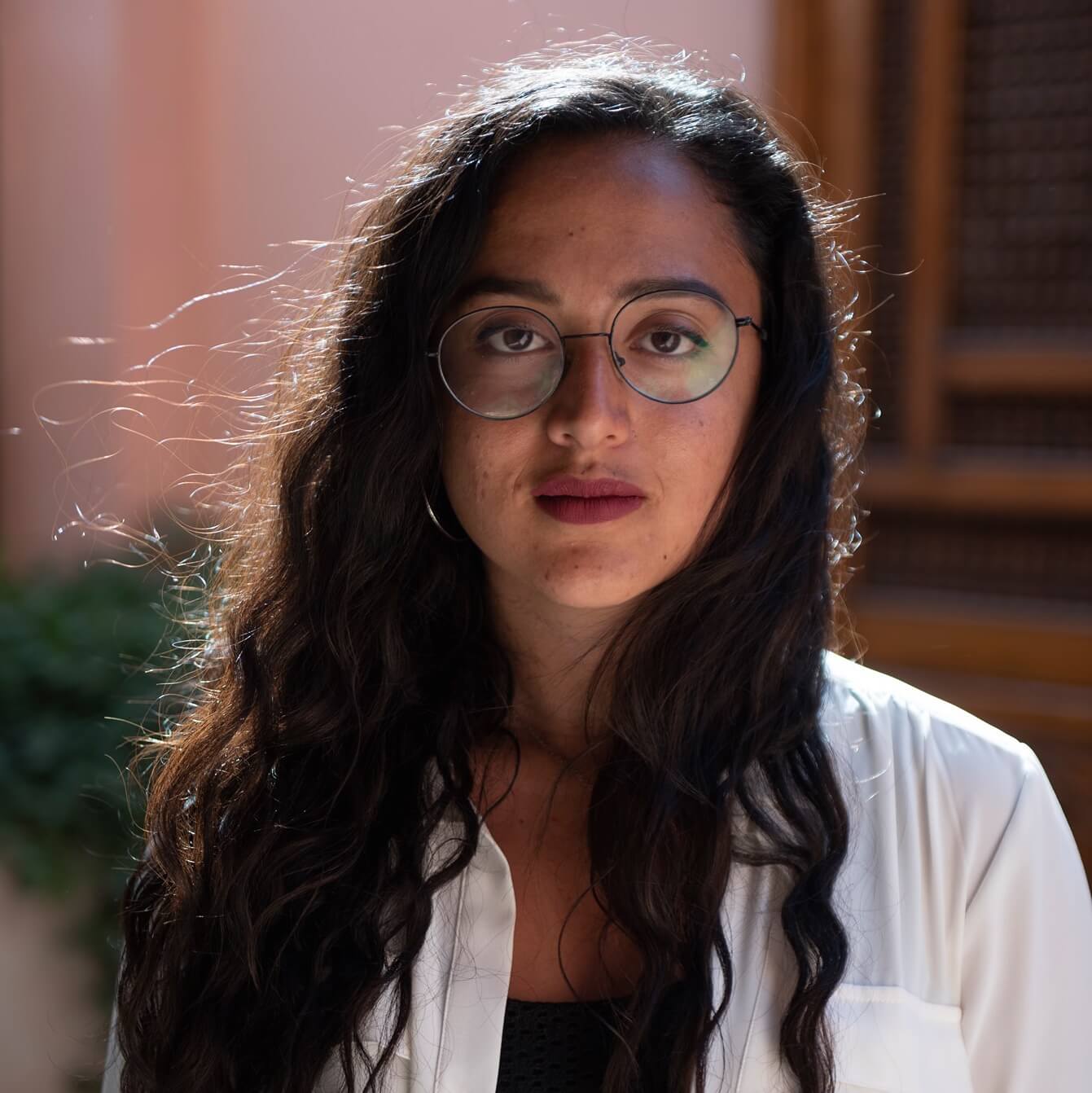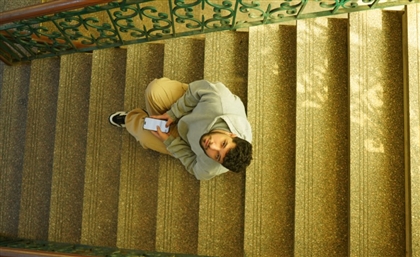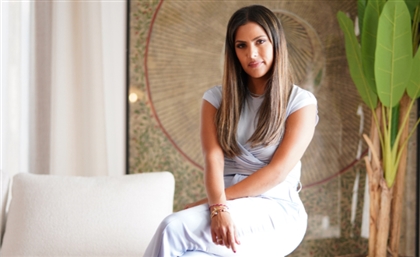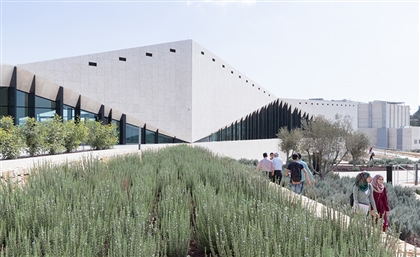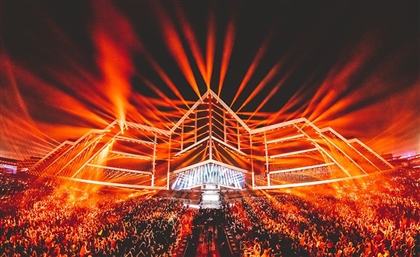Stargaze to Spacewalk: Sarafina Nance, Egypt’s Astronaut-in-the-Making
Astrophysicist, women's advocate, author and future spacewalker. Egyptian-American Safina Nance opens up to CairoScene's Bahira Amin about a remarkable journey that started as a stargazed dream.
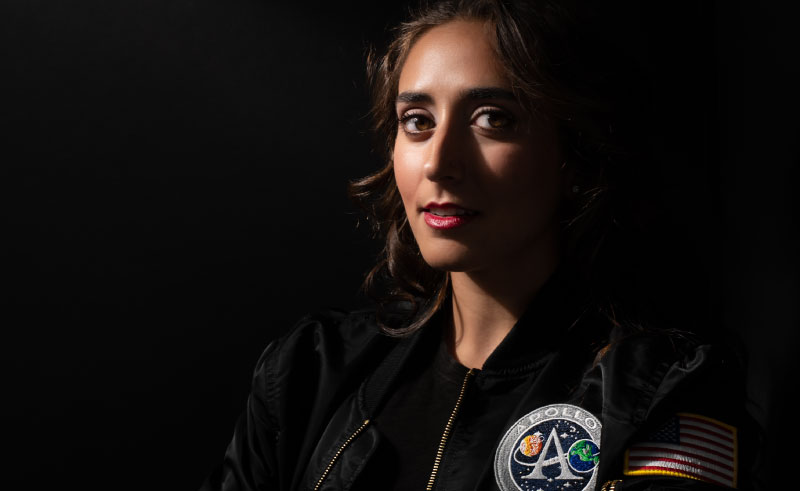
When I was a kid, I wanted to know everything there was to know about everything - plants, marine biology, the Amazon rainforest, the animal kingdom, how trains work, you name it. I grew up with my nose buried in hand-me-down science books, guessing at words many years above my reading level, pestering family members with nonstop questions.
At some point, I let go of my dream to be every type of scientist at once. And though I don’t regret falling in love with words instead, I wonder if I lost interest the way so many other girls do.
Combine gender stereotypes with a lack of female figures to look up to, and a study conducted by Microsoft in 12 European countries showed young girls’ interest in science and technology drops very quickly. Passion plateaus, curiosity goes unignited, and that sense of wonder fizzles out or reroutes to alternate careers.
When Sarafina El-Badry Nance speaks about her love for astrophysics, and the profound curiosity to look up at the stars that unites us all, it’s not hard to see the four year-old that fell in love with the night sky while stargazing with her father in Austin, Texas. The 28-year old science communicator, astrophysicist, and PhD candidate speaks with the same sense of wonder that ignites childhood passion, even as she tells me about her astronaut training for a Mars simulation.
While researching supernovae for her PhD candidacy at UC Berkeley, Nance has written an astronomy-focused children’s book, hosted an online edutainment astronomy series, landed a book deal with Dutton Books to write a science-driven memoir, and advocated for women in STEM.
In between the zero gravity flights and high altitude training she’s undertaking for the Mars simulation, we caught up with Nance to talk about the wonders of the universe, encouraging girls into male-dominated fields, and her Egyptian identity.
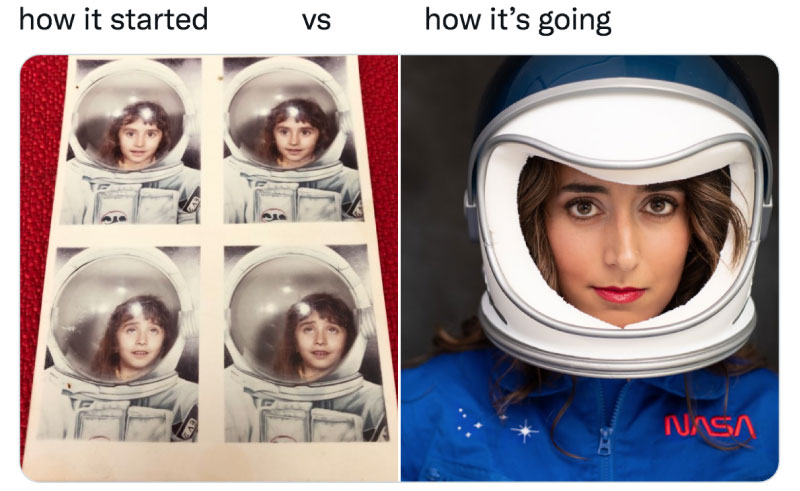
BA: Give us a rundown of what you’re working on right now.
SN: As an astrophysics PhD candidate at UC Berkeley, I research supernovae and computational cosmology. So I get to study the biggest exploding stars in our universe and use them to try and understand the fundamental aspects of our universe, so that’s really cool and exciting.I’m also a woman’s health advocate. I was diagnosed with the BRCA-2 genetic mutation, which gives me an 87% lifetime risk of breast cancer, so I had a preventative double mastectomy about a year and a half ago. And I spend a lot of time advocating for women’s health, for genetic testing, and for people to be empowered by taking control of their health.
Then in August, I’m doing an analogue astronaut mission on an island in Hawaii, where we live like we’re on Mars for two weeks. And I’ll be doing research on supernovae while I’m there and essentially training to hopefully, one day, become an astronaut.
And then finally, I’m an author. I have a kids’ book coming out at the beginning of September about astronomy. And I’m currently working on a science-driven memoir coming out in the next couple years.
BA: So the goal is, one day, to be the first woman from Om El Donia in space...
SN: Exactly, that’s it!
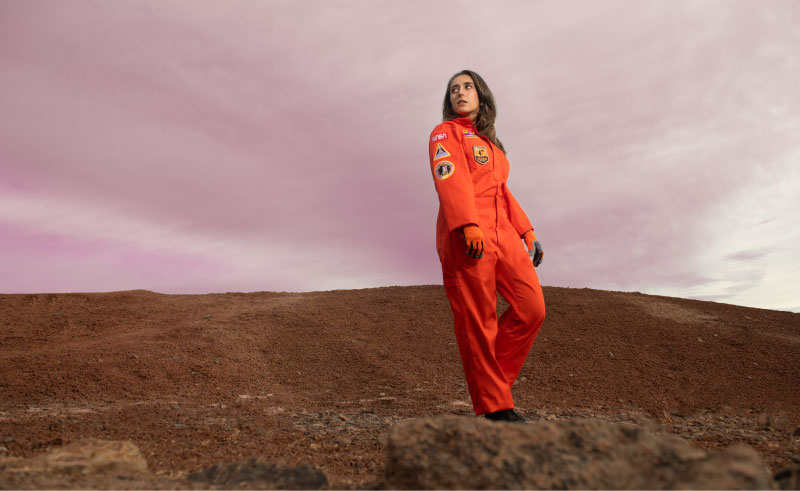
BA: You’ve spoken about being an Arab woman, and you have the Egyptian flag in your Twitter bio. Tell me about your relationship with that part of your identity.
SN: My mother is Egyptian, she was born in Cairo, so I’m half-Egyptian. Although I grew up in the US, I went to Egypt probably once or twice a year. Most of my family is over there, and so much of my identity. As I get older, I’m tracing back parts of me that I’m realizing are actually intimately related to Egyptian culture and my family there.
I think everybody feels a sense of home about something in their lives. For me, I would say the two most calming aspects of home are the night sky, and Egypt. They’re what I think about when I think about ‘home’.
There are parts of me that I was always curious about, but made fun of a lot for, when I was a kid. I naturally have very curly hair, I’m brown, my middle name is El-Badry. And when I was a kid, I tried to blend in to be accepted. It’s sad - those are parts of me that I really love and that I can see in Egyptian culture and my Egyptian identity.
So it’s been really wonderful growing older and embracing those aspects and saying, “those are actually really beautiful, and they come from a very beautiful place, and I’m proud of it!”
BA: I’d love to go back in time - did you fall in love with astronomy when you were a child? What first lit up that flame in your head?
SN: I grew up looking at the night sky, and as young as four or five years old, I remember going stargazing with my dad and loving it. I struggle with anxiety, I struggle with mental health, and the night sky is the one singular thing that calms me down and puts everything in my day-to-day life in perspective. I think I noticed that very early on, and sought it out continuously as I got older.
I like to explore, I like to learn about things that we maybe don’t have the answers to yet. So when I learned that we only really understand 4-5% of everything in our universe, and everything else - 95% - we have no idea what it is, I remember being utterly astounded. I was so enchanted by that, there’s so much opportunity for exploration and curiosity and asking questions and learning more about our place in the universe.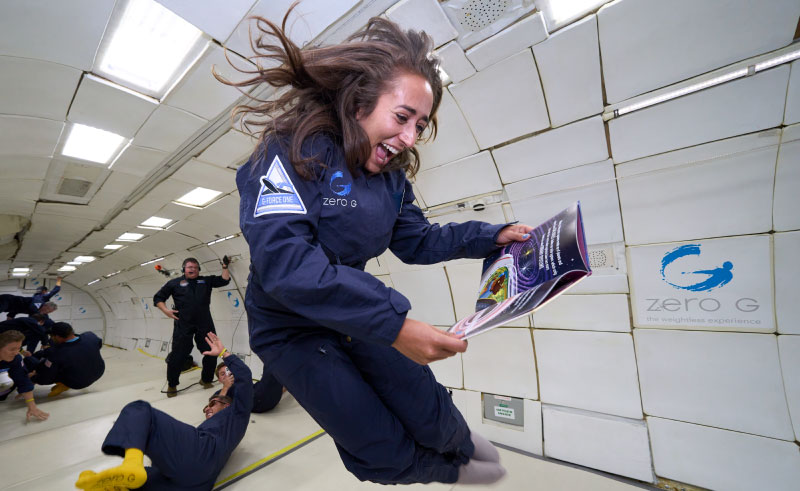
BA: A big step towards that exploration is taking part in the analogue astronaut mission in August - what’s that going to be like?
SN: So it’s run by the International MoonBase Alliance in collaboration with NASA (the Goddard Space Flight Center), at Mauna Loa in Hawaii, which is a volcano at 8200 feet. You basically live there at the habitat, which is this white dome, for two weeks, completely simulating what it would be like to live on Mars.
Every time you leave the habitat, you wear a spacesuit. You go on field missions, you have rationed food and water, you have limited to no contact with the outside world, any communication that you do have has a time delay of 20 minutes, because that’s the time delay to Mars.
It simulates astronauts living on Mars, for a few reasons. One is to model crew dynamics, to understand how people live together in challenging situations. Another is to basically replicate any possible scenario that could come up, and have it happen on Earth first. If anything goes really wrong, there’s a backup crew an hour away that can come help you out. Whereas on Mars, if something goes wrong, you either problem solve, or you’re dead.
So there’s a lot of emphasis being put on trying to problem solve as much as possible here, before we actually go to the Red Planet.~
BA: When you come back, it’ll be close to the release date of your book, 'Little Leo’s Fascinating World of Astronomy'. How did the book come about, and what was your experience of writing it?
SN: 'Little Leo' is a series of books for ages 4-8 that talk about different aspects of science. There’s a palaeontology book, an engineering book, all to introduce kids to science very early on. When the publisher reached out, it was really exciting for me, for a lot of different reasons. One was that I didn’t have books like that growing up. You know, it was either fantasy or picture books. There wasn’t a science book that was accessible, early on, at those ages.
Even if there was - which I don’t remember there being - the people and the children depicted in those books were predominantly white dudes. That means you alienate so much of the population, because other kids don’t see themselves in those pages.
So this was really exciting in two ways. One, I get to share the magical, fascinating, extraordinary parts of our universe, in ways that I actually think about them. I don’t think about physics in terms of math or deriving equations in my head, I think about the big, general questions that we’re learning about. And most often, it’s something that a five year-old can understand.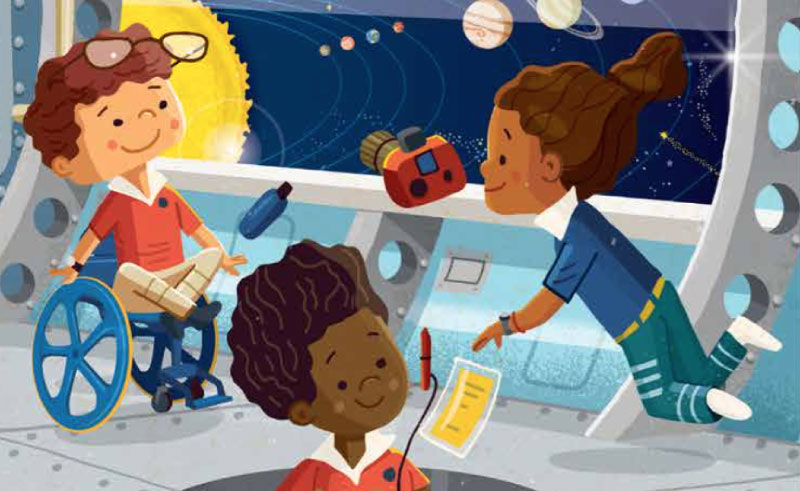
I really strove, in collaboration with the illustrator and the editor, to depict young children from all different intersections of identity, to show that you can be disabled and floating around in space, you can be a Black boy floating around in space. You can be all different sorts of identities, and that shouldn’t prohibit you from having your curiosity about the universe ignited.
So it’s been really incredible to see that translated to the page, and seeing it with my own eyes. And thinking about how if I was a little kid, I would have loved this. I would see myself in these pages and think "maybe I can do this one day."
BA: A lot of your work falls into science communication. You have a huge following on Twitter, you’ve written a children’s book, you hosted Seeker’s Constellations series. Why do you think that’s so central, and where do you want to go with it?
SN: When I first learned about Carl Sagan, I was 15 or 16. He’s this incredible science communicator, and I loved how he was able to talk about something that he is so clearly passionate about - he has this giant smile on his face when he speaks. And he gets to share his passion and love with the world, and people really respond to that.
I love talking about things that I’m excited about. As young as high school, I was writing these long posts on Facebook, talking about stuff like whatever celestial phenomenon was happening that weekend. And I just loved sharing that with people, and seeing how they respond, and igniting that same curiosity and openness and, in some cases, unity. People are united in this love and curiosity to look up, and I love that.
When I interned at an observatory in college, I realised that not only did I love science communication, I was pretty good at it. So it was this really good confluence that translated when I started getting on Twitter and writing these science threads, and being frankly a little shocked when people would respond with "oh this is so cool, tell me more!" because that meant I could rant for even longer!
BA: For adult audiences, you’ve recently announced your book deal, Starstruck, a memoir about you and the wonders of the universe - how do you bring all of those things together?
SN: I’ve recently started saying that it’s a science-driven memoir, meaning that I share beautiful, interesting aspects of our universe - and the science behind them - thematically, and intertwined with my experiences. So much of my journey is about falling in love with the universe and constantly getting told, implicitly and explicitly, that I don’t belong.
I want it to be a very raw, authentic portrayal of both struggle and these beautiful things that I love, and try to make meaning from. It’s also asking how I can improve these situations for future generations of young kids who fall in love with science. Instead of being dissuaded very early on - and being told “you’re not cut out for this” - maybe they won’t have that experience.
BA: You’ve also been an advocate for women and people of color in STEM. Does being Egyptian ever manifest in your work?
SN: In my entire career, I’m typically one of very few women in physics and astronomy spaces, specifically in physics. Of the 50 people in my quantum mechanics class, I was one of two women, and the only woman of colour.
It’s hard to say “‘this person treated me a specific way because I’m a woman, or because I’m brown,” but there have been a few incredibly frustrating situations. They’re subliminal messages and microaggressions that really build up and, over time, make me and I know other people of colour feel like they don’t belong in these spaces.
I’ve dealt with being told over and over, for most of my life, that I don’t belong in this field and that I don’t have a place here. So I can only imagine how much harder it is for people of more marginalised identities. It’s a really, really challenging experience to be any sort of marginalised identity in spaces that are so predominantly white and male.
If you look at attrition rates from various departments, you’ll notice that almost all of the people who drop out and don’t get a PhD are people from marginalized identities. And there’s a reason for that, there’s harassment, there’s people who tell you that you’re not good enough to be here.
People try to make the argument that women and people of colour just aren’t interested in STEM, but no - we are interested. We’re just pushed out consistently, throughout the entire pipeline, that by the end, we’re so exhausted, we leave. Of course, it’s better than 30, 40 years ago, but it’s still pretty bad.
So my goal is to change that for future generations, and be a source of representation. I hope a kid looks at me and thinks, “I see someone who’s like me, who has struggled, and is doing this. Maybe I can too.”
- Previous Article Dr.Sisilove or How (Not) To Diffuse A Bomb
- Next Article Platinum Coated Desert Adventures in Dubai
Trending This Week
-
Apr 18, 2024



